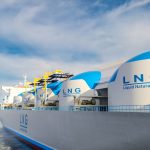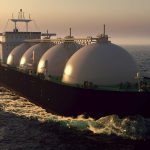

Expert Guide to Crude Oil Tankers: Key Insights on Loading and Unloading Processes during chartering process
Introduction:
Crude oil, often referred to as “black gold,” fuels industries and powers economies worldwide. Ensuring the smooth and efficient movement of this invaluable resource requires a well-coordinated ballet of logistics. In this blog, we delve into the intricacies of loading and discharging crude oil onto and from oil tankers, emphasizing safety, efficiency, and the pivotal role of inert gas systems.
Origins of Crude Oil:
Crude oil, the lifeblood of modern civilization, finds its origins in diverse sources, including oil fields, terminals, and refineries. Entities like oil producers, storage facilities, and terminals serve as crucial collection and distribution points.
Chartering a Crude Oil Tanker:
Navigating the process of chartering a crude oil tanker is crucial for transporting this essential commodity. Platforms like Chartership.com emerge as invaluable resources for those looking to charter a tanker. They offer detailed insights into the types of tankers available, the specifics of various vessels, and personalized chartering services allowing charterers to contact shipbrokers and shipowners directly.
This section guides you through selecting the right tanker for your needs, whether for short-term charter or long-term engagement. It covers key considerations such as tanker size, type, and suitability for different crude oil grades, as well as advice on negotiating charter terms and understanding legal and safety requirements. By utilizing these resources, you ensure a seamless and efficient charter experience, tailored to meet your specific logistical needs in the crude oil supply chain.
Any entity (i.e. charterer) looking to ship quantities of oil will contact ship brokers or ship owners through their available channels (i.e. through chartership.com or the shipbroker/shipowner website). Once the port of loading, shipment quantity, Laycan date (i.e. date of vessel arrival to the port of loading), and port of discharge are defined, shipbrokers will provide suitable vessel candidates to meet the requirement along with vessel hire rate usually defined per day. Whether the hire is for a single voyage or a specific charter period duration (short-term or long-term) will affect the shipowner’s interest and the rate offered. Port of loading and port of discharge will also affect owner interest to ensure reasonable proximity to their vessel’s current location and also to ensure the vessel does not engage with sanctioned countries- a condition adhered to by most shipowners. Also, the type of oil being shipped will affect the vessel choice as crude oil tankers typically transport crude oil while oil byproducts (i.e. jet fuel, Diesel) are typically transported on specialized products/chemical tankers.
On the other hand, charter rates will depend on the Oil Price and market vessel utilization rate. When utilization rates are high (95%+), charter rates can climb multiple folds compared with periods when utilization rates are low. Be sure to check charter rates offered compared with current market hire rates for similar vessel specs/sizes.
Process of Crude Oil Loading onto Oil Tanker
The process of loading crude oil onto an oil tanker is a meticulously planned operation. Each step is executed with precision to guarantee safety and efficiency. Specialized equipment such as loading arms and hoses are used to connect the tanker to the loading point, and stringent safety protocols are followed to avert potential accidents.
Technical Intricacies:
Several technical aspects come into play during crude oil loading. One of the primary considerations is temperature control to maintain the oil’s viscosity, ensuring it flows smoothly. Additionally, powerful pump systems are deployed to transport the crude from storage tanks to the tanker. Inert gas systems play a pivotal role during this phase as well, preventing the risk of explosions and protecting all personnel involved.
Crude Oil Discharge by Oil Tanker Process
Destinations of Crude Oil:
Oil tankers, laden with crude oil, embark on voyages to diverse destinations. These can include refineries, storage facilities, and ports, where entities such as refineries and petroleum companies eagerly await the arrival of this precious cargo.
The Discharge Process:
The discharge of crude oil from an oil tanker mirrors the precision of the loading phase. Pipelines, storage tanks, and advanced equipment come into play at the destination. Just as during loading, strict adherence to safety measures is paramount to prevent accidents and environmental harm.
Technical Intricacies:
Technical nuances abound during the discharge process. From separation methods to temperature control, each element is carefully managed. The role of inert gas systems remains critical, this time to protect against environmental pollution and maintain safety throughout the discharge process.
Conclusion:
Understanding the meticulous processes of loading and discharging crude oil is vital to appreciating the intricacies of the global oil supply chain. Safety, efficiency, and environmental responsibility are central to these operations. Inert gas systems, a critical component, ensure the safe transfer of crude oil, preventing accidents and pollution. In navigating the world of crude oil logistics, the industry’s commitment to safety and environmental protection is as robust as the machinery that moves this vital commodity across the globe. Whether you are involved in the production, transport, or utilization of crude oil, these processes underscore the significance of meticulous planning and technology in every shipment.
Add a comment Cancel reply
Comments (0)
Related posts


LNG Tanker Valuation: What Influences the Sale Price?

Buy and Sell Offshore Vessels






